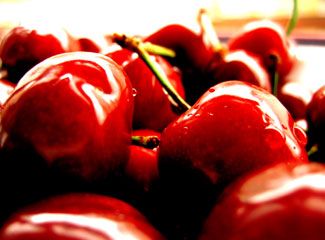- Clinical Technology
- Adult Immunization
- Hepatology
- Pediatric Immunization
- Screening
- Psychiatry
- Allergy
- Women's Health
- Cardiology
- Pediatrics
- Dermatology
- Endocrinology
- Pain Management
- Gastroenterology
- Infectious Disease
- Obesity Medicine
- Rheumatology
- Nephrology
- Neurology
- Pulmonology
In an Era of Steroids, Febuxostat, and Rasburicase, Can Cherries Prevent Gout?
In an era characterized by an expanding array of expensive gout therapies, it may be that cherries have been overlooked.

In 1931, Ethel Merman recorded the song Life Is Just a Bowl of Cherries. The catchy tune was so popular that remakes by Rudy Valee, Doris Day, Judy Garland, and Johnny Mathis would follow.
Isn’t this a strange way to begin a review of a new article on the treatment of gout? It turns out, though, that in an era characterized by an expanding array of expensive gout therapies, it may be that cherries have been overlooked.
Zhang and coworkers1 proposed to study the relationship between cherries and the frequency of gouty attacks in people with proven gout. They employed a case-crossover study that included 633 people. Those in the cohort:
• Had to have gout diagnosed by a physician
• Had to have had an episode of gout within the past 12 months
• Had to be at least 18 years of age
• Had to live in the US
The population was typical of patients with gout seen in primary care practice: 61% drank alcohol; 29% took diuretics; 45% took allopurinol; 54% took NSAIDs; and 25% took colchicine. Cherries were ingested as fresh cherry fruit, cherry extract, or both.
The risk of gouty attacks decreased with increasing cherry consumption up to 3 servings over 48 hours. Analysis of participants who met American College of Rheumatology criteria for gout demonstrated that the risk of recurrent gout was decreased to 0.65 (95% CI, 0.50-0.85).
Did bad habits override the benefits accrued from cherries? The benefits of cherries were stronger when they were consumed during periods of higher purine intake (meat protein) or alcohol abstention and when diuretics and NSAIDs were avoided. The same historical “no-nos” remain. But when cherries were combined with allopurinol, attacks were 75% lower. Since allopurinol doses are decreased in patients with CKD-3 or worse, the synergistic effect with cherries may become important.
The authors also observed that cherries may be unique. The benefits in regard to gout were not obtained with strawberries, grapes, or kiwi.
Why do cherries prevent gout flares? Cherries contain vitamin C (ascorbic acid), which may decrease uric acid. Cherries also provide high levels of anthocyanins, which possess anti-inflammatory and antioxidant activity. Cherries may contribute to pain relief as well.
Gelber and Solomon,2 who wrote an accompanying editorial, saw merit in the Zhang study. They quantified a serving of cherries as one-half cup, or 10 to 12 cherries. They provided important historical perspective on the issue. They credited Dr Blau in 1950 for the initial cherry-gout association. He made the important observation that 12 patients with gout had fewer flares, “as a result of eating about one-half pound of fresh or canned cherries per day.” The editorialists also injected a healthy sense of humor. They revisited Erma Bombeck’s book that drew inspiration from Ethel Merman’s 1931 song. They entitled their editorial, “If life serves up a bowl cherries, and gout attacks are “the pits”: implications for therapy.”2 You’ve got to love it!
References:
References1. Zhang Y, Neogi T, Chen C, et al. Cherry consumption and decreased risk of recurrent gout attacks. Arthritis Rheum. 2012;64:4004-4011.
2. Gelber AC, Solomon DH. If life serves up a bowl of cherries, and gout attacks are “the pits”: implications for therapy. Arthritis Rheum. 2012;64:3827-3830.
